A Guide to Switching from Nikon to Sony for Wedding Photography
![]()
After almost a decade of photographing weddings with Nikon cameras, we decided to trade our D750 cameras for the Sony a7 III. Here are a few thoughts on how the process went and why we feel it was the right decision.
When I first tried the a7 III, I was expecting not to like it. I’d tried various A7 iterations over the years that were ergonomic nightmares. I’d also heard endless talk of the a7 III’s ‘horrible’ menu system. We’ve owned a few Fuji mirrorless cameras (X100, XT2) over the years which I’ve loved but have led me to believe mirrorless is still some way off challenging DSLRs for so-called ’real’ work. I also had a full Nikon system that has served me really well and helped me capture some of the best images of my life. While I’m generally not a fanboy, I like when something works well. And having shot Nikon for 10 years, I would always consider their offerings first. I loved, and still love, the D750. So, in short, I wasn’t actually objectively fair to the Sony when I first grabbed it.
Now, in the past, we’ve contemplated changing system only twice. Both times to Canon and both times, after long consideration, we didn’t do it. This time was different. After a day with the a7 III, we made the decision to put ourselves through the abject hell and financial turmoil of changing a full camera system for two people at the height of wedding season.
There was a method to our madness…
What’s the Sony a7 III like Ergonomically?
![]()
The first thing that surprised me about the a7 III was how it felt in my hand. The important disclaimer here is that I’m 5ft 9 and have dainty little Trump-esque hands. It felt really perfect nestled in my delicate digits. The grip is nicely recessed like the D750, and I didn’t have the ‘pinky problem’ I’d had using other Sonys, where my littlest of little fingers would dangle in the air below the grip. Within a minute or two I was entirely at ease with how everything was placed — many controls are just like Nikon D750 which is a massive help.
So the much-maligned ergonomics, for me at least, were as good as or better than my beloved D750. It’s important to remember that there were some ergonomic complaints about the D750 when it came out as well — we all love a good whinge about something. While the D750 kinda short-changed back-button shooters, the a7 III gets it spot-on offering dedicated AF-ON and AEL buttons on the back. The back button on my D750 (assigned AEL button) required a bit more reach, but the a7 III has it positioned perfectly
Using the Sony a7III Menu System
Ah, the supposed horror show that is the Sony camera menu system. I’d been warned about it so much that I imagined it would be like navigating my way through Mordor. You’ll read stories online of how people have ventured into it never to be heard from again.
The Sony menu system is daunting at first. There are around 14 billion menu pages to navigate, and some items have been given what appears to be deliberately obscure names. It feels like it was designed by the kind of person who can conceptualize quantum mechanics but can’t microwave popcorn. With that said, I quickly grew to enjoy the depth of it. Sony has left the camera pretty open to customization, and as a result, the menu is extensive. It would speed things up significantly had it been a touchscreen menu. For some inexplicable reason, the Sony a7 III has a touchscreen that doesn’t work when navigating menus. In an age where practically everyone from toddlers to centenarians uses a touchscreen daily, this strikes me as daft.
Like Nikon, you can assign things you’ll often use to a custom menu area cutting out stuff that you won’t need on a shoot. If you do this when first setting up the camera, you’ll have little need to descend into the murky depths of the menu system on a shoot. Added to this, the mini function menu accessed quickly from a dedicated button, is brilliant. It allows you to change many of your most-used features without taking an eye off what you’re shooting.
Sony a7 III Customization and Set Up
Setting up the customizable buttons and menus on the a7 III makes you wonder why all camera manufacturers don’t design their cameras this way. The customizable buttons are utterly brilliant. In fact, pretty much everything is customizable in some shape or form — this again flew in the face of my ergonomics concerns. I remember marveling that I could assign my movie Rec button to control ISO on the D750. The Sony is next-level in that regard, and it’s a very clever way of doing things.
![]()
It was only over the course of shooting my first few weddings I began to realize what I wanted on the menus and which things needed to be a button press away. While I first set it up to mimic my D750, after a while, I realized other things were more important and adjusted accordingly. I now have a quick way of quickly turning the brilliant silent shutter on and off. I have one-touch ISO control, and I can quickly turn face-focus on and off. By default, I have the camera set to EVF only because I prefer to manually switch to Live View only when I want to use it — a habit from the D750.
Focusing Ability of the a7 III
![]()
This is what everyone has asked me about the Sony, so I’ll get to the point: The focusing ability of the a7 III is brilliant. I will add the caveat that Ireland has been experiencing ridiculously beautiful weather since I bought the camera (we’ll put that one down to coincidence, not Sony) but I’ve still had to use it in some challenging situations where it faired as well as or better than the brilliant D750. When it gets good focus (practically all the time), it’s as sharp as anything I’ve seen from a camera.
Does the Sony a7 III Eye-Focus Actually Work?
I had been ready to dismiss Eye-Focus as a gimmick, but it is a proper delight, especially during portraiture, leaving you to concentrate on framing. When a bride walks up the aisle, you can lock on to her eye and rarely miss a shot as she walks towards you.
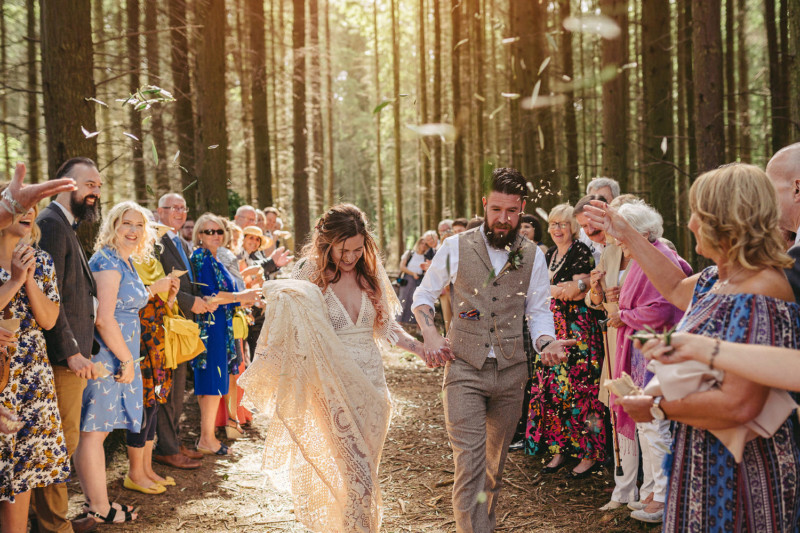
There is still room for improvement though. In large groups it can sometimes get a bit lost, choosing to jump to a face/eye in the distance rather than the logical one so I often still shoot candids with spot focus. It would be good to allow you to cycle through the recognized faces or for the camera to pick the closest eye to the AF center point.
The camera also has a face recognition system. Basically, you take a picture of the Bride/Groom in the morning and can at any stage set the camera to prioritize her face in any large groups throughout the day. You can do this for up to 6 people and set them in order of priority. I think this feature is still in its infancy, and I’m not convinced from using it that it’s beneficial in current form. It does give us a great idea of where Sony technology is going and could probably improve with future firmware updates.
The edge to edge tracking is incredible. We’ve tested this with people walking running and jumping towards us, and 90-95% of the shots are generally usable. This has made it more fun to shoot confetti shots and kids running about, especially when combined with Eye Focus. The D750 gets nowhere near the Sony in this respect.
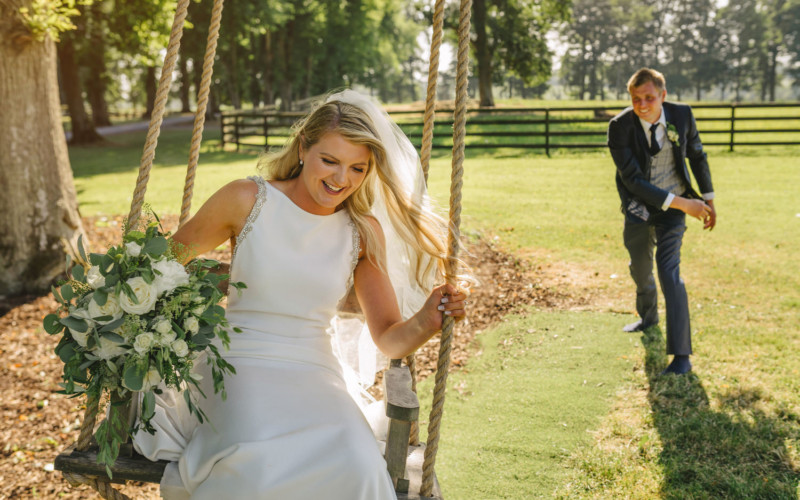
Being able to shift your focus points right to the edge of the frame is excellent. One of my biggest gripes about the D750 was the limited spread of AF points — especially as I’d come from a D4 which had a wider spread (though still nowhere close to the Sony).
How Well Does the a7 III Focus in Low Light?
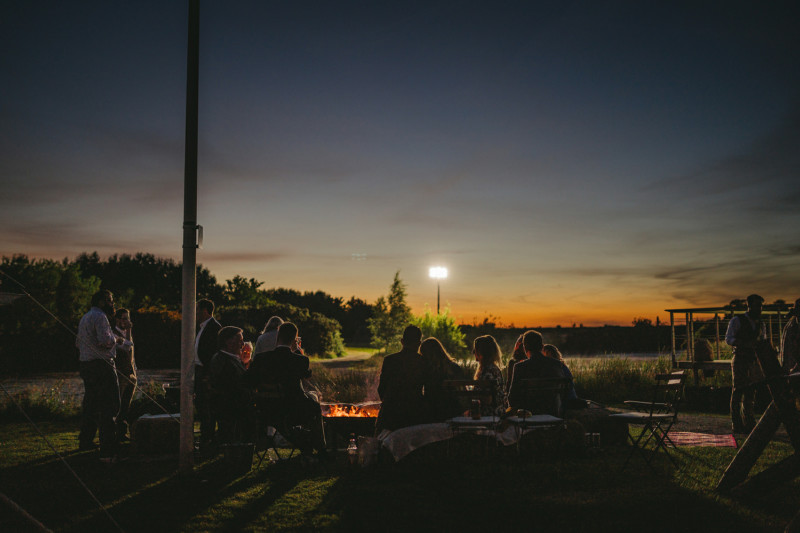
In low light, I found it to equal or beat the D750 regarding both AF and high ISO ability. I didn’t find the camera hunted for focus in conditions that had me shooting 6400 ISO, unlike the Fujis I had owned (and many DSLRs). In fact, eye focus was often working accurately. In post, I found more color depth in high ISO than on the D750.
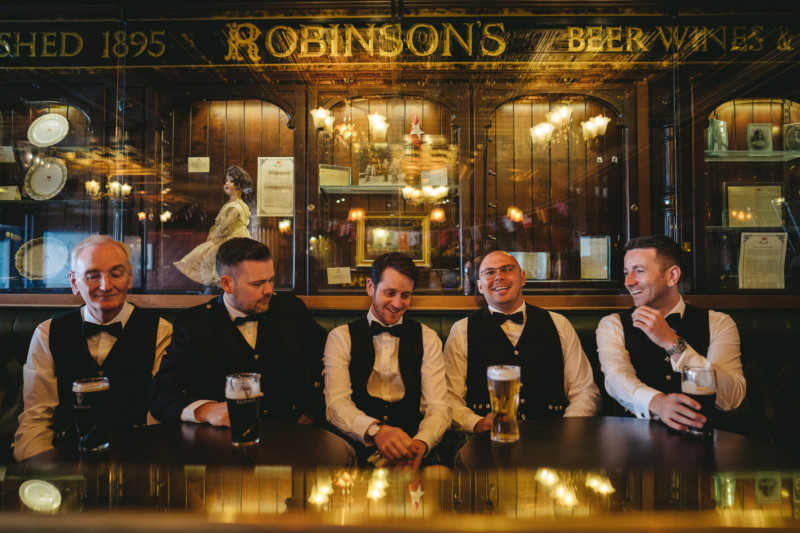
The Nikon also missed focus more than the Sony in low light (it was still great though, given its age). With low noise at high ISO, coupled with the Sony’s great in-camera stabilization, I can see this camera getting me out of a few tight spots.
Shooting with Live View on the a7 III
Don’t listen to any curmudgeonly old pro that tells you live-view is for amateurs. Any feature that your camera gives you is worth exploring to see how it can improve your shooting. The D750 is responsible for making me enjoy using LV. On the Nikon, I both loved the feature (flippy screen and exposure preview) and hated it (piss-poor AF and what seemed like an eternity of screen blackout).
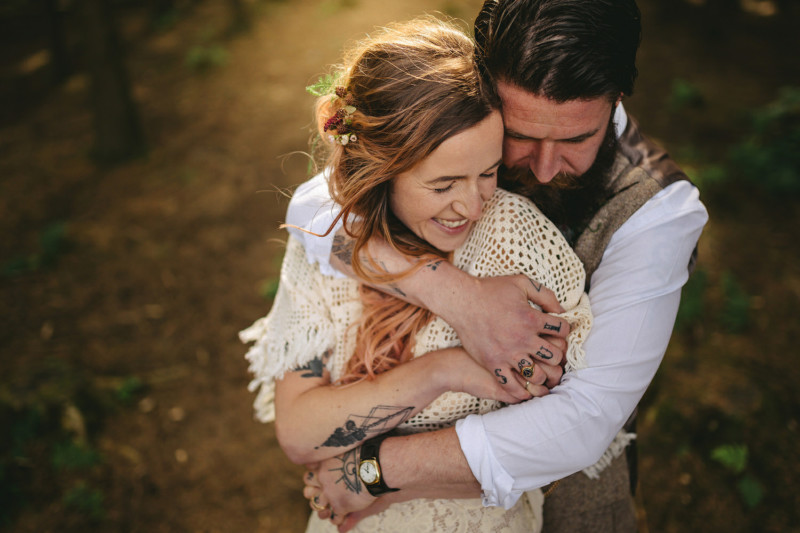
Being able to use the same incredible focus you get on the EVF to shoot in LV is a gift. I love shooting from a variety of perspectives and angles, as well as shooting through things. Doing this on the D750 was a fight for focus, on the a7 III it’s a total joy. You can even use the touchscreen to select your focus point quickly and accurately, right to the edge of the screen.
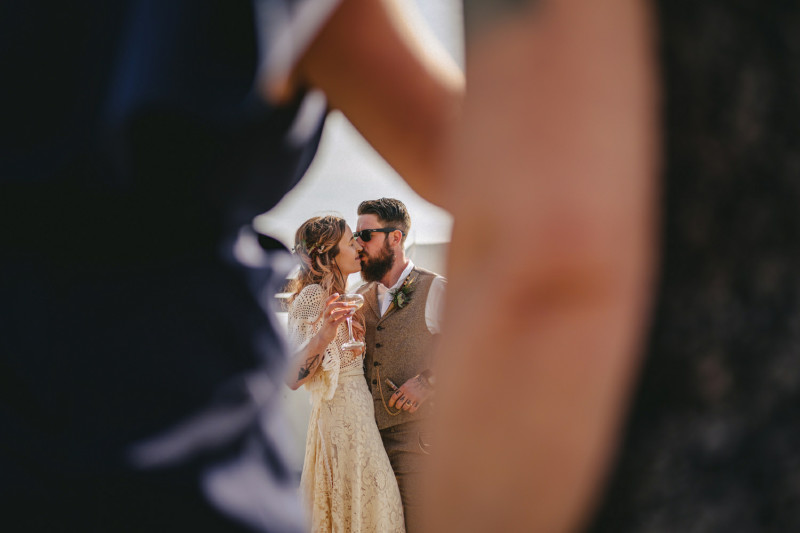
I’ve found it allows me to be more subtle during weddings too — often shooting candids from the hip instead of having the camera up to my eye. Coupled with the silent shutter, you can really blend into the background more.
Editing a7 III Files Compared to Nikon
I edit using Lightroom, and annoyingly I had to finally cave in and subscribe to Adobe’s creative cloud so I could edit the a7 III files — Adobe isn’t updating their standalone Lightroom anymore, forcing you into a subscription if you buy any new camera body. Admittedly, CC is reasonably good value, but not having the option to purchase the software outright sits uneasily with me. Alternatively, Capture One has special offers for their Sony standalone program that makes it an utter bargain. Alien Skin has also updated Exposure to support the cameras and have the added bonus of some fantastic film emulations built in.
![]()
In terms of editing, it took me around 30 minutes to adjust my Nikon presets to work with Sony files — I may tweak them more over time. They’re not a million miles away from the D750, probably in part due to Sony manufacturing many Nikon sensors (the D750/D810/D850 and others contain sensors made by Sony). If you already went through the mental anguish of transitioning from a Nikon D700/D3s to a D750/D850, you’ll find it relatively easy to adjust to the color of Sony Files.
![]()
What Lenses are Best for Wedding Photography on the Sony a7 III
In all honesty, I’m not a big pixel peeper. I don’t do ‘wall tests’ or compare bokeh side-by-side for ‘creaminess.’ I often keep or sell lenses based on factors I can’t articulate. When shopping for lenses, I was drawn to the same focal lengths that I used on Nikon. We shoot primes exclusively, and most of our work is shot on 35mm or 85mm. I was lucky my friend was selling a mint condition Zeiss 85mm F1.8, and it’s absolutely gorgeous to use. Because of its shape and design, one of our brides referred to it as the ‘bell-end lens’ — I’m still not sure if I love or hate that nickname.
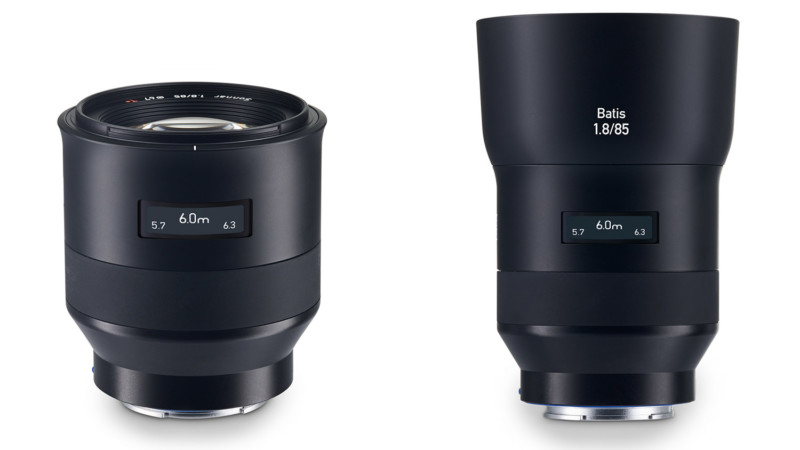
Brideen shoots with Sony’s own 85mm FE 1.8, and it’s every bit as good as the more expensive Zeiss. Because we had already spent gazillions of pounds changing everything, we settled on Sigma Art lenses for 35mm, which are much cheaper than Sony’s 35 1.4 and ridiculously sharp. The Zeiss Batis 25mm (little bell-end?) is excellent but rather expensive for an F2. Its small size, quick AF, and sharpness make it worth it, but I can see the 24mm 1.4 Sigma giving it some competition. The 55 1.8FE is so sharp, quick and light that it had me wishing for a similar sized 35mm 1.8.
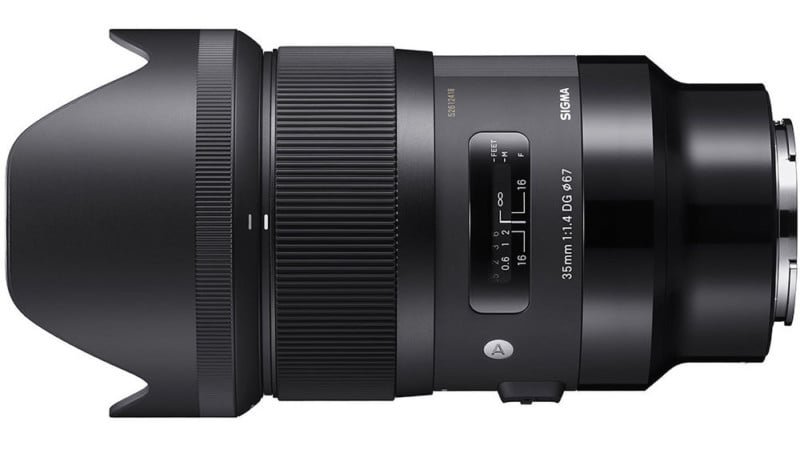
The best thing about using native FE mount lenses is that they have no need for focus micro-adjustments. With our D750 we had to manually fine-tune every lens for every camera body. Some back-focused, some front focused. It was a tedious process that took endless hours. With the a7 III, any native prime lens we use is sharp and accurate straight out of the box.
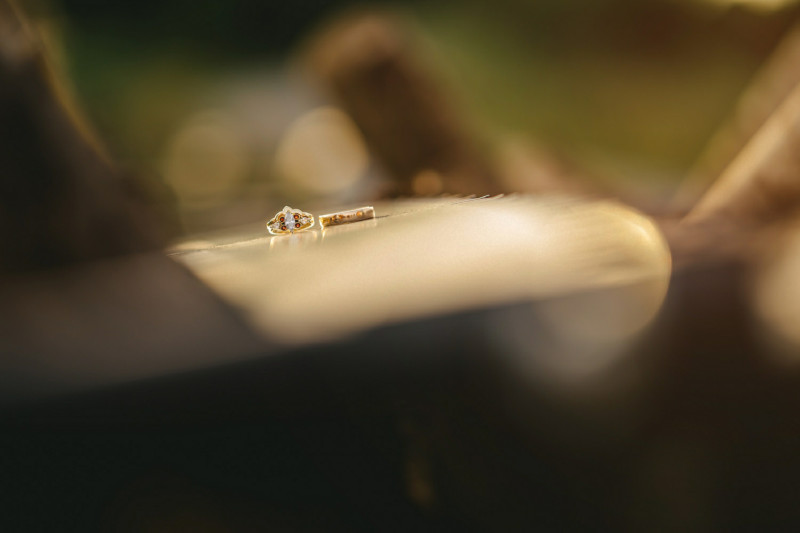
It is worth noting that there just isn’t as many native lenses for the Sony as there are for Canon/Nikon cameras, and some (not all) of the Sony glass is very expensive. That said, I know people who are happily shooting with an adapter and their Canon glass with no issues, and we’ve kept hold of our old manual Nikon lenses to use with Sony via an adapter. Sigma has made a big statement by supporting the FE mount on the Art range and offering a quality alternative to the often pricier Sony lenses.
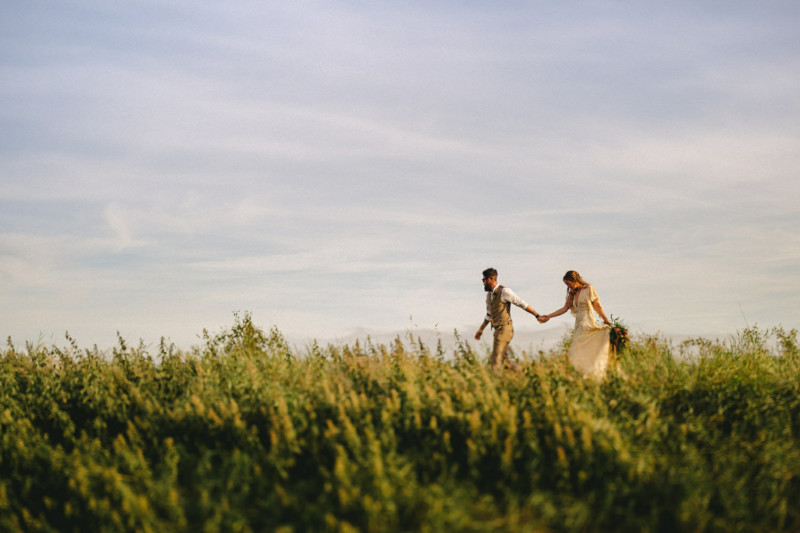
How Does the Build Quality of the a7 III Compare to Nikon?
When the D750 came out, there was much whining about how it felt like a toy compared to other FX Nikons. How it was cheap and wouldn’t be robust. The same criticism is now being leveled at the Sony a7 III, with its build quality being questioned by D750 users. It’s too early to comment on how well built they are, but first impressions are very good. I don’t expect them to be like our old Nikon D4 which I’m pretty sure could survive a nuclear apocalypse, but the bodies have a surprising solidity. I do think that the black metal finish will be susceptible to scuffs and scratches over time, though.
Whether it will be as robust as the D750 over the years remains to be seen, but it is worth pointing out that all 4 of our D750 bodies were recalled by Nikon for warranty repairs.
a7 III Buffer and High-Speed Shooting
The buffer, a big gripe of mine with the D750 from day one, is perfect on the a7 III. It has never once stopped shooting before I wanted to. Too many times I’ve found myself covered in confetti and watching a couple kiss while cursing at my D750 that had decided to go on strike while it emptied its buffer.
The A7 can shoot compressed RAW at 10fps should you need it. And it can do it silently. That is utterly ridiculous. You can adjust the drive mode for Lo, Med, Hi, and Hi+ (aka insane). I generally find the Med or Hi setting is quick enough for most wedding burst-shooting.
How Silent is Silent Shutter Mode?
In the past 5 years, Canon and Nikon introduced DSLRs with quiet modes. In the case of Nikon at least, quiet modes were crap. It did little to make the camera much quieter — giving it a curious elongated sound that always made me feel more conspicuous. With mirrorless cameras, silent means silent. There is no sound whatsoever. Silent shooting is a revelation and now allows me to do Unit Still Photography without a blimp, or become discreet when a wedding/event requires it.
There is a significant downside to it, though. When shooting indoors, you can (often) get banding from modern artificial light sources. In these cases, the camera throws up a flicker alert on screen and you know to adjust to a slower shutter speed (helped by Sony’s inbuilt stabilization) or switch to the mechanical shutter. The more expensive A9 is much better at reducing banding in silent mode, so I imagine when we see the next iteration of the A7 it’ll be less of a problem.
It’s also not advised to shoot really fast moving objects with the silent shutter as you can get a shutter roll effect that distorts images. For the average wedding photographer, this shouldn’t be a significant issue.
Shooting with an Electronic Viewfinder (EVF)
The EVF will polarise people more than Brexit, but I think it’s great (the EVF, not Brexit). There’s no more chimping to double-check exposures — I know I’ve nailed it (and likely the focus too). With the a7 III there is a millisecond blackout when taking a shot that some get annoyed by, but it doesn’t really bother me. When in silent mode it’s actually quietly reassuring to see that flicker and know you’ve taken the shot!
I recall being disappointed that the D750 didn’t have focus peaking. Shooting my manual Nikon lenses on the Sony is more enjoyable than shooting them on Nikon, thanks to peaking. I have no issues with lag or disorientation that I’ve heard from some. And reviewing images on the EVF in harsh sunlight is really helpful compared to cupping your hands over an LCD screen to reduce glare.
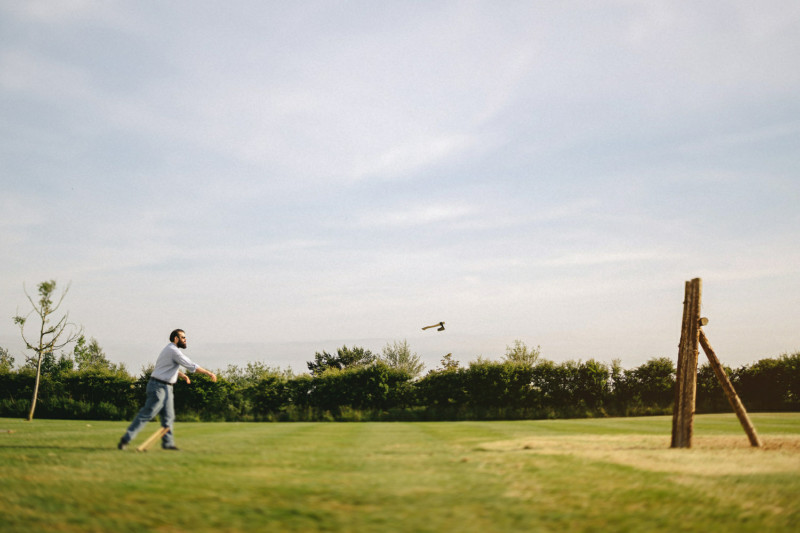
I should give a nod to Fuji at this point — their split-screen EVF is incredible when it comes to shooting with manual lenses. It would be nice if Sony could nick that feature!
What’s the a7 III Battery Life Like?
It was rare that I needed to use a second battery in my D750s while shooting a wedding. With our shooting style, the a7 III takes two batteries to cover an extended 12 hour+ wedding day so you will definitely need to buy a backup. But in saying that, the battery tech is superb considering it’s powering an EVF and screen constantly. If I heavily use my D750 screen, the battery depletes quickly.
You can charge the a7 III via USB or USB-C, meaning that those big battery packs or your car USB ports can top you up should you need it. USB charging, in general, is a handy failsafe if you’ve traveled for a shoot and forgotten to pack your battery charger (more on the charger later, grrrr) or if you shoot destinations and want to save weight. We have an Anker charger that’s capable of charging 4 a7 III bodies and a MacBook simultaneously from the one plug.
What Are the Flaws and Downsides of the Sony a7 III?
Remember earlier when I said we all love a whinge? Well, every camera has flaws, and the a7 III is no different with some ranging from trivial (the SD card slots are the wrong way about) to the more serious which I’ve discussed below. Some of you will struggle to change to Sony from the D750 because of these things, while many will tell me to bugger off and quit complaining. So yeah, this is pretty subjective and deliberately extensive, but here it goes.
The same people who complained about the D750 body being too small will hate the size of the a7 III. With heavier zoom lenses, I can imagine it would feel terribly unbalanced. Although, that being said, a friend is a 6-footer with big manly, man-hands and he loves it. And you can always buy a battery grip to give it more weight, bigger grip, and better battery life. Ergonomically, the main irk for me is that the tilt screen is difficult to articulate as it really doesn’t have much for your nails to grip onto. And I would’ve liked another customizable button or two at the front of the camera — I miss the Preview and function buttons on the front of the D750.
As a cost-saving measure, the a7 III is missing the handy drive-mode/AF selector dial that features on the Sony A9. If you’ve come from a D750, you may find yourself missing that when it comes to quickly changing to continuous high-speed shooting or bracketing/timer modes.

While I like the levels of customization, including being able to assign ISO to a jog, there is one major flaw for me: There’s no way to quickly turn on/off auto ISO. Instead, you have to scroll down to the lowest ISO value before turning it on. This is poor design that can lead to accidentally knocking it on and off. Also concerning auto ISO, you cannot set your minimum shutter speed to 1/3 stops so, for example, you can only choose between 1/250 or 1/125 but nothing in between. Hopefully, Sony addresses these things with a firmware update.
An initial complaint as a back-button shooter was the proximity of the REC button to the AF-ON button. No doubt this is great for video shooters, but on my first wedding, it led me to accidentally record a dozen blurry, expletive-ridden videos. Delving into the menus sorts this out. You can turn off that button for stills mode — although it would’ve been nice if you could customize it instead.
The clock inexplicably has no seconds counter (even though it records time to the second) so syncing 4 cameras is unnecessarily awkward. Not only has every Nikon camera I’ve owned had a second counter, many could be synced to your computer clock using bundled Nikon software.
In a colossal PR misstep, Sony decided not to bundle a dedicated charger with the a7 III prompting angry buyers to take to the streets in violent protest (well, kinda). The official charger from Sony costs $88/£70, which is pretty mean when you’re shelling out $2,000/£2,000 for a camera. I bought Hahnel’s amazing ProCube2 charger which is around the same price but can charge two batteries simultaneously. It also looks cool — an important consideration when buying any battery charger…
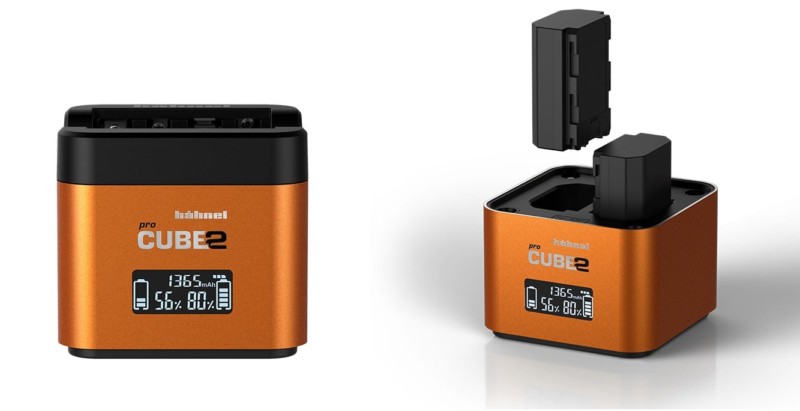
In terms of the files themselves, there is currently no 14-bit lossless compressed RAW format, which is really poor in 2018. This leaves you with the choice of shooting 50mb uncompressed RAW files or 12bit lossy 25mb ones. In my experience, the compressed files are perfect for the majority of moments at a wedding, but where I need more dynamic range, I switch to uncompressed RAW. Be sure to read up on this from some excellent writers and geeks out there who’ve gone into much detail on the subject before deciding which to shoot with.
Although I’ve had no problems editing Sony files, when reviewing images in Photomechanic, the extracted JPEG previews are small — only 1616x1080px. This makes it very difficult to check photos for focus and adds time to any culling. Nikon NEF files, by comparison, include a full-sized JPEG preview. There are workarounds (shoot RAW+JPEG or convert to DNG), but none of them satisfactorily resolve the issue. It would be great if somewhere in the labyrinth of menu items, we were given the choice of JPEG preview size.
The good news is that most of the issues with the a7 III can be fixed with firmware. The bad news is that Sony might not bother their arse to fix them. Here’s hoping…
Should I Wait for Nikon’s Mirrorless Camera or Switch Now to Sony?
Well, obviously I decided not to wait, but its good to be aware that at least one Nikon mirrorless body will be released later this year — maybe two. I had a few reasons for not waiting, and they were based entirely on conjecture at this stage.
While I fully expect Nikon’s mirrorless camera to be amazing, it’ll almost certainly not be cheap. The a7 III is so aggressively priced at the minute that I can’t imagine Nikon getting close to it on price. If it costs (the currently rumored) £2,500-£3,000, that would make it too expensive for me and put it dangerously close to the grey market price of the excellent Sony a9. As a photography duo, when we buy into a system we buy 4 bodies, so a £500 price difference ends up being £2,000.
Nikon’s own mirrorless camera is set for launch in August.
Secondly, the Nikon mirrorless camera will have a new mount so unless Nikon has been working on it for a decade, we’ll likely see only a handful of lenses at launch. To use our old Nikon lenses with it will require adapters which will probably be quite expensive and make them bulkier. Using Sony as an example, adapted glass generally doesn’t perform as well as native glass.
Finally, over the years, being an early adopter of Nikon products hasn’t been fun. The D600 and D800 were deeply flawed, prompting quick revisions. The D750 has suffered QC problems and recalls. Nikon is new to the full frame mirrorless party, while Sony has been developing their mirrorless products for almost a decade.
![]()
I’m fully prepared for the schadenfreude should Nikon release a flawless 24mp mirrorless camera that costs the same as the a7 III, alongside killer 24/35/85 primes, but I really don’t see it happening. Right now, I mirrorless camera is on the market that does everything I want it to while having all the lenses I need available. There’s no guarantee that Nikon will manage that: will it have eye-focus? will the battery life be as good? will it offer the same level of customization?
Ultimately, it’ll only help the consumer if there are more great full-frame mirrorless cameras out there, so hopefully, Canon and Nikon get it right.
Should I Switch to the Sony a7 III from the Nikon D750?
I believe that the Sony a7 III is objectively better than the Nikon D750 in almost every department, but this is precisely what you’d expect of a camera that is more expensive and four years younger. The question of ‘should I change to Sony’ is a more subjective one.
Right now you can pick up a mint condition used D750 for under £900 and use it with a range of lenses and accessories going back decades. At that point it becomes a question of economics — the D750 is still an incredibly capable camera for wedding photography. Will spending over twice the money on a Sony a7 III make your images twice as good?
Nikon D850 and Canon 5D Mark IV shooters will laugh their balls off at this puny little toy camera and continue on as they are with their ‘more-professional’ big DSLRs. It’s all horses for courses.
Personally, I’m really enjoying using the a7 III and excited by what Sony’s next steps are. Whereas my years of buying DSLRs felt like evolutionary steps, this feels revolutionary. Over long days carrying two camera bodies, my back and shoulders are thanking me for switching to Sony. I’m picking it up more when not working whereas before I’d opt to use an iPhone instead of a big, bulky DSLR. If you shoot destination weddings, like us, the lighter, smaller bodies make things easier. Everything we need for the two of us to shoot a wedding can now fit in a single carry on bag.
If money isn’t a problem, then yeah, consider the switch. I don’t think you’ll regret it. If money really is no object, get yourself a couple of Sony A9 and A7rIII bodies too, for the hell of it.
Tips for Using the Sony a7 III for Wedding Photography
Although the battery life is impressive, you can get more life out of it by switching the camera to airplane mode (just like your phone). Unless you really need any of the connectivity features, you’re merely wasting your battery. Also, mechanical shutter takes more battery power so switching to electronic front curtain or silent shooting modes will give you more shots between charges.
Focusing modes are subjective, but I find that Flexible Spot (S) in AF-C alongside Eye Focus is an excellent combination for weddings.
Metering type is less important than ever when you have an EVF. Set the EVF brightness to standard, and you’ll find that metering will be accurate just by looking at the screen. If you like to use spot metering, make sure you change spot metering point to ‘focus point link.’
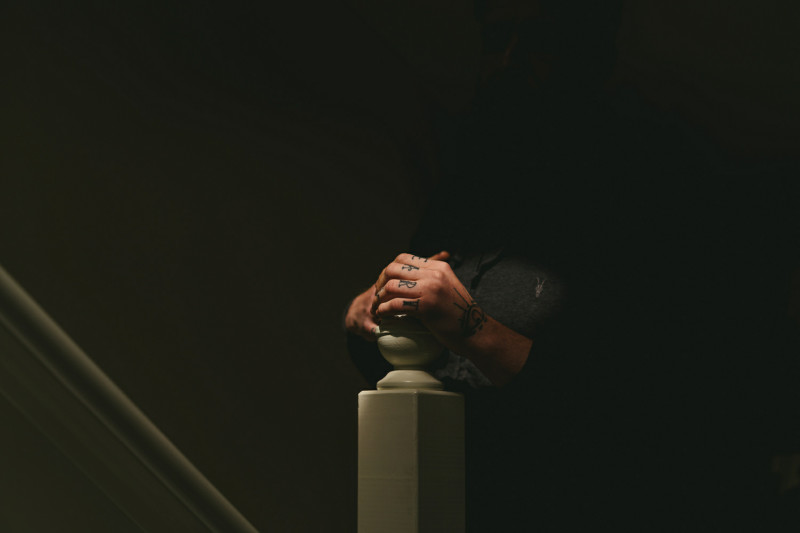
Not to everyone’s taste, but I like to have the ISO set to the back jog-wheel so it can be changed without having to press a button.
If you’re a back button focuser, turn off the REC button in stills mode to avoid a build-up of 2-second sweary video clips.
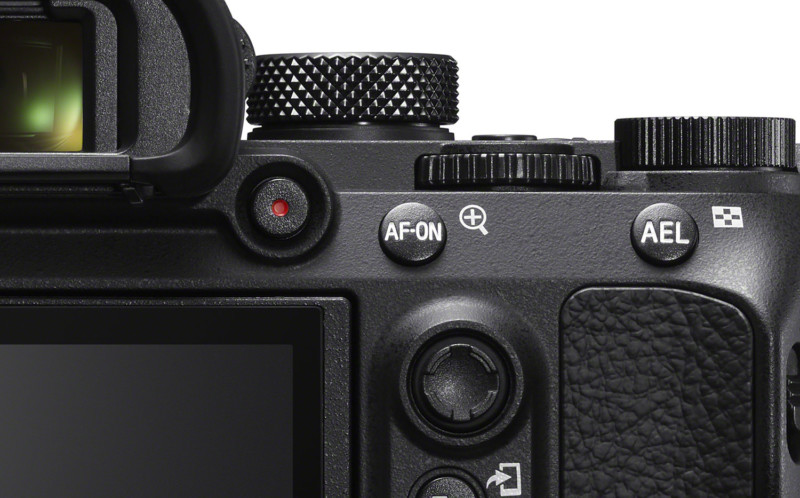
You can set the touchscreen to enable a pad mode. This allows you to use the screen to move your focus point while looking through the EVF. This won’t be to everyone’s taste, but it is a bit quicker than using the joystick.
Before shooting anything, set up the ‘FN menu’ and the ‘My Menu.’ Your couples will physically age while you try to find items in the main menu during a shoot unless you have all your shortcuts in place. Some of the things I have in ‘My Menu’ include Format, Date/Time, Airplane mode, RAW format, Custom buttons etc. Find out the things you might need quick access to and put them in these menus.
If you intend to use silent shooting, definitely assign it to one of the custom buttons. I have it assigned to C1.
Use the custom shooting settings (U1 and U2, if coming from a D750). I don’t care how you use them, but they’re great so use them!
Turn off all audio signals. Having any kinds of beeps coming from your camera is bad, especially during a ceremony. You may as well shout ‘LOOK AT ME’ really loudly.
Gridlines aren’t to everyone’s taste, but I like them. Turn on Rule of Thirds grid, and it will be overlaid on your screens. It can help you compose your shots — placing your subjects better, keeping horizons straight — meaning less cropping in post.
Unless shooting really high contrast scenes, I’ve found compressed RAW to work perfectly well. If you’re not sure, switch to uncompressed during high contrast scenes or portrait sessions.
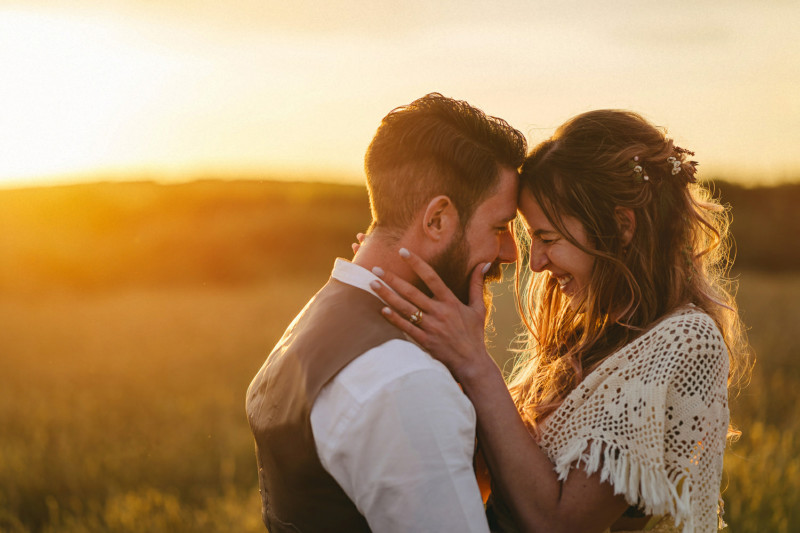
You can rate images on the fly using the a7 III. Assign a button (I use C3) and you can quickly give images a star rating that will be picked up when you import to computer. This is really handy if you’ve just taken an image that you want to use as an online preview for the couple, or if you want to start culling the wedding during any downtime.
That big full-frame sensor doesn’t have a mirror in front of it so, if you can, keep lens switching to a minimum during shoots to stop it getting dusty. Also, have a rocket blower on hand to clean it out before every shoot.
Maybe don’t get a massive speedlight — it’ll feel weird. We bought the Godox TT350s and its the perfect accompaniment for the a7 III.
Conclusions
![]()
My opinion is that the a7 III is currently, pound for pound, the best full-frame camera for wedding photography that you can buy new at the time of writing.
It manages to provide speed and accuracy along with exceptional customization all in a small, sleek package. Its sensor is brilliant, giving the perfect balance of IQ, DR, resolution and file size for high-volume shooters — I still believe 24mp is currently the optimum sensor size for weddings.
The a7 III feels like a pivotal moment in the evolution of mirrorless professional cameras. With a few tweaks, mostly firmware, it could be near flawless.
![]()
Full disclosure: I am not a representative for Sony or Nikon, nor do I work with either company. I buy all my gear and the generally the only contact I have with camera companies is when something goes tits up. That being said, I’d welcome any free s**t that I could get from either company to try out.
These comparisons are based on our real-world shooting — all the pictures are from real weddings/couple shoots. I haven’t shot one single red-brick wall. I haven’t extensively commented on weather sealing, quality control or durability of the a7 III because it’s too early for me to say how it performs in those departments.
Check out more of Christin and Gareth’s wedding here.
About the author: Deci Gallen is a wedding photographer based in Belfast, Northern Ireland. The opinions expressed in this article are solely those of the author. Gallen and his wife Brideen are the husband and wife photography duo behind Simple Tapestry wedding photography. You can find more of their work on their website, Instagram, Facebook, 500px, and Flickr. This article was also published here.